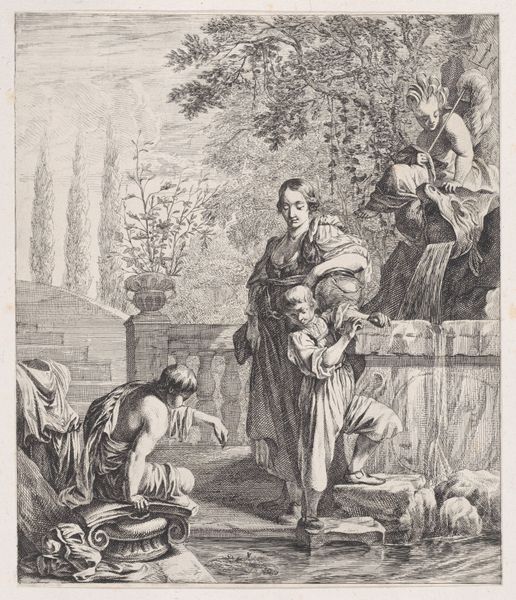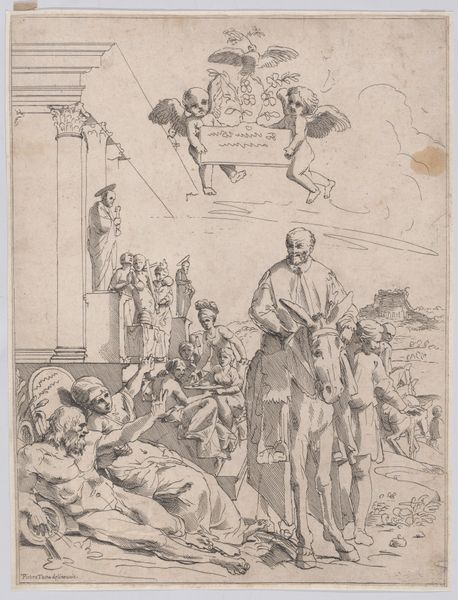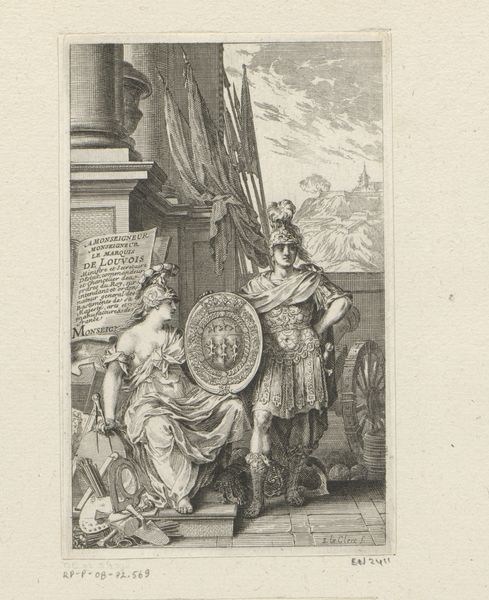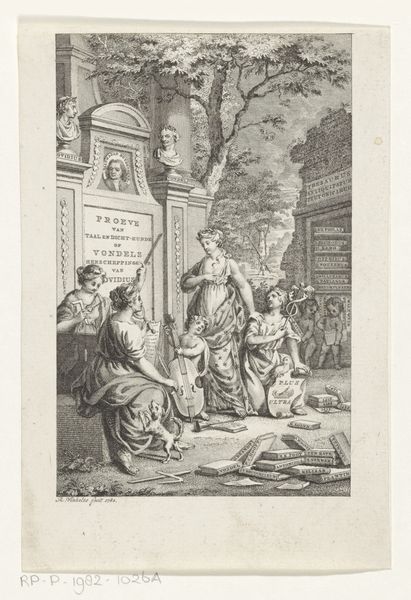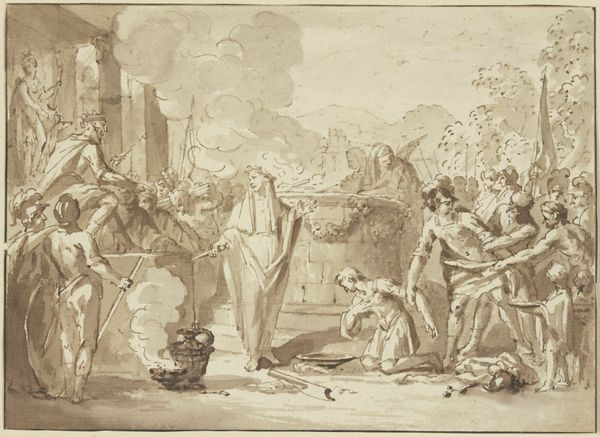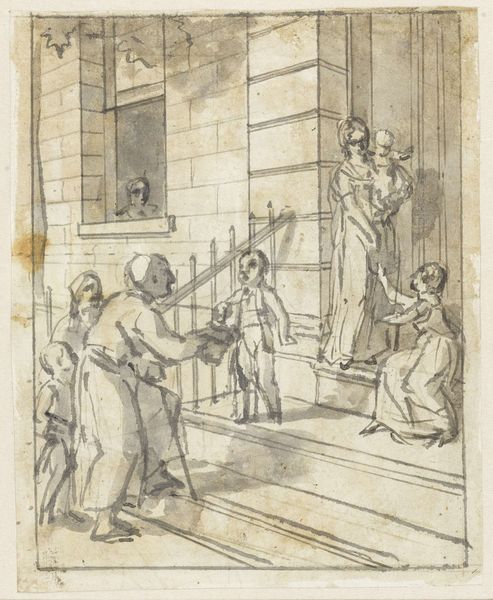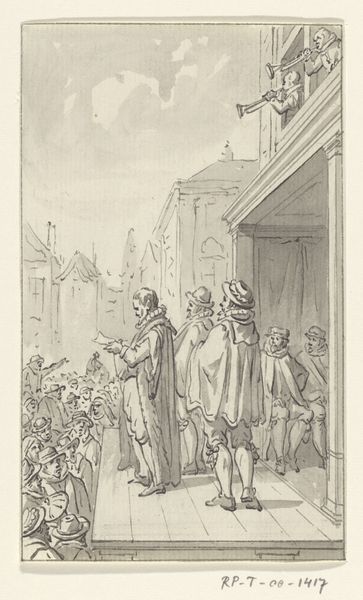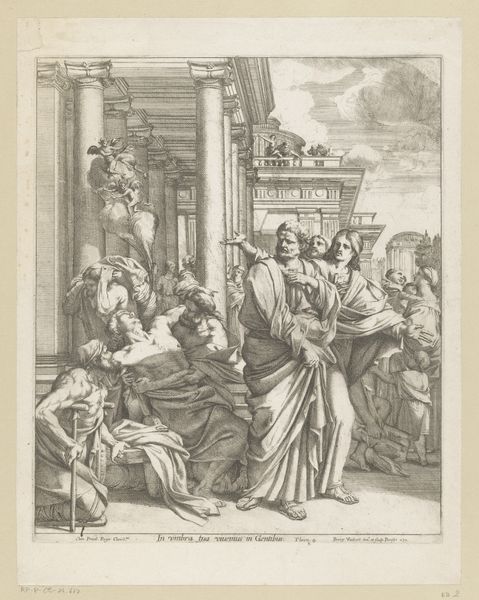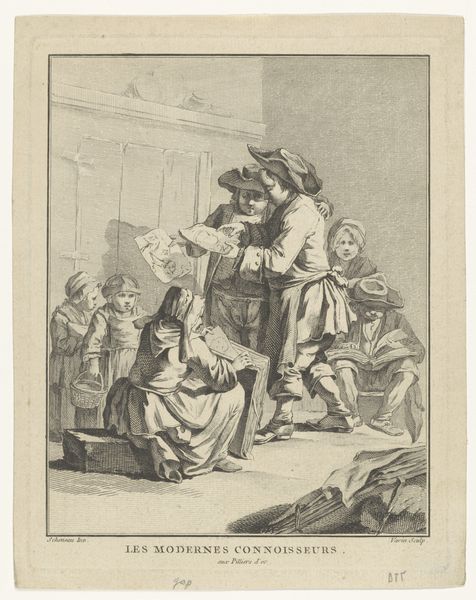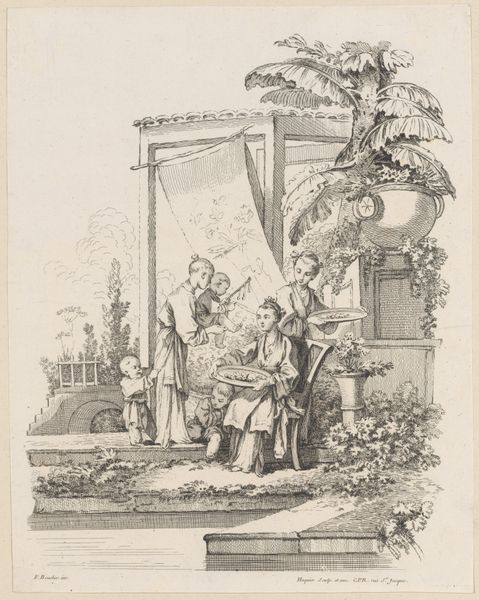
Allegorisk blad i anledning af hertug Franz III's indtog i Firenze 1739 1739 - 1751
0:00
0:00
drawing, ink
#
drawing
#
allegory
#
baroque
#
figuration
#
ink
#
cityscape
#
history-painting
Dimensions: 212 mm (height) x 164 mm (width) (bladmaal)
Curator: This is Marcus Tuscher’s “Allegorical Sheet on the Occasion of Duke Franz III’s Entry into Florence, 1739," created between 1739 and 1751. It’s an ink drawing now housed here at the SMK. Editor: Immediately striking is the clear allegorical mode at play here. A seated figure presides from a carriage drawn by lions, almost staged like a theatrical production. There’s a strong sense of monumentality even in this smaller work. Curator: Yes, Tuscher was a master of creating these kinds of grand illusions through meticulous drawing. What fascinates me is how the drawing itself functions as a sort of propaganda machine. The ink and paper are tools, deployed to manufacture an image of power and stability amidst shifting political landscapes. Editor: Exactly, and formally, notice how the artist balances the dynamism of the lion-drawn carriage with the stability of the classical architecture in the backdrop, visually connecting power with civic pride and longevity. The use of chiaroscuro gives depth and weight, but also, perhaps, an element of drama. Curator: The paper’s journey from a rag pulp to the finished drawing speaks volumes about the period's print culture. It highlights a social context and the economic structures supporting artistic endeavors and the glorification of rulers. Editor: You’re drawing attention to the labor and materiality, a contrast with the image’s apparent aristocratic ease. I can't help but feel how Tuscher used relatively limited tonal values in ink to convey a feeling of weight and volume. Notice too the detailed cross-hatching to give solidity to otherwise ethereal figures. Curator: I am interested in Tuscher's participation in the broader mechanisms of creating and consuming art as a social product tied to power structures. And you seem taken by how effectively those ink lines depict three-dimensional form. Editor: Indeed! From a purely formal viewpoint, the controlled ink-wash conveys mass and structure. Yet these were the very structures shaping the means of artistic creation at the time. We seem to meet back at a nexus point no matter our chosen methodology. Curator: It appears so. Each approach enriches the understanding. Editor: Absolutely, a richer view of an artwork's construction is ultimately attainable through both lenses.
Comments
No comments
Be the first to comment and join the conversation on the ultimate creative platform.
